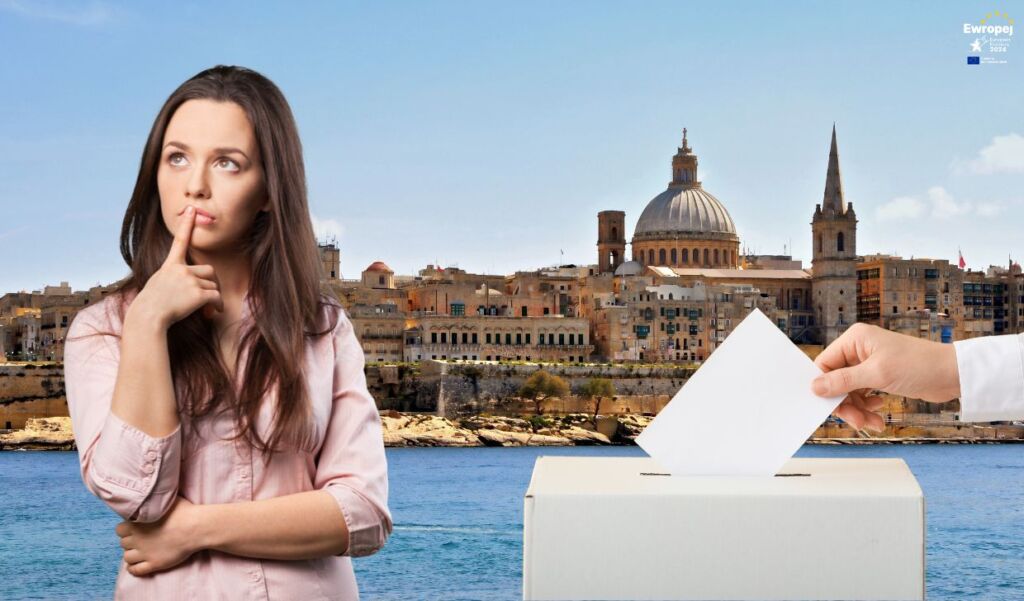How To Make The Most Of Your Vote In Saturday’s Election

With just two days until Malta goes to the polls to decide which six MEPs to send to the European Parliament, many are still uncertain who the vote for.
Malta’s electoral system is known as the Single Transferable Vote system which, as the name suggests, is designed in order for your vote to be transferred from one candidate to the next until it stops at someone that is able to use it to get elected.
So how does the system work? When you enter the polling booth, you’re presented with a list of candidates each with a box next to their name.
Candidates running in the name of the party will be grouped together with others from the same party with their names printed in the party’s colour. Independent candidates are listed in a section of their own, normally at the bottom of the ballot sheet.
Candidates’ names are printed in alphabetical order, which tends to see candidates whose surname ends in a letter high up the alphabet receive more votes. A phenomenon affectionately known as the “Donkey Vote”.
Assuming you aren’t set on cancelling your vote by drawing a big willy on it, you’re going to have to decide who to give your first preference to and in what order to rank the candidates you would like to see elected.
Once the voting ends, the ballot boxes are transferred to the counting hall in Naxxar.
Assigning First Preference Votes
Ballot boxes start to be opened and placed face down in anticipation of the start of the count. Once the count starts, staff look at each vote and determine who the voter’s first preference is as well whether or not the vote is valid. The vote is added to that candidate’s tally (literally a pile of votes in a pigeonhole). This process also doubles as a filter for invalid votes.
Determining the election’s quota
Once the electoral commission has a final number of VALID votes cast, a quota is determined. The quota is calculated by taking the total number of votes and dividing it by the total number of seats available +1. The result has another 1 added to it (we won’t bore you with the maths) and the quota, i.e. number of votes needed to get elected, is determined.
Vote journey begins
Assuming you’ve mastered the skill of writing numbers neatly within boxes, your vote is valid and now starts its journey through Malta’s electoral system. What happens to your vote next depends to some extent on who you’ve voted for. We can say they are broadly three types of candidates you might have chosen: a star candidate that will exceed the quota immediately, a mid-tier candidate that stands a chance of being elected but isn’t guaranteed to do so or a candidate with no chance of being elected who will be eliminated at some point during the proceedings.
The counting process is essentially a series of counts at the end of which one candidate is elected or eliminated, and their votes transferred. Who you assign you first preference vote to will determine what happens to you vote next.
Candidates with quota on first round
Your vote’s journey could be quite short-lived if you vote for one of the start candidates who hit the quota in the first round. This is because the candidate will need to hold on to a number of votes equivalent to the quota which they will use to get elected.
For example, if the quota is set at 1,000 and the first preference candidate has received 1,200, then 200 of those votes are extra and need to be transferred on to other candidates – these votes are referred to as surplus votes.
In order to determine how the surplus votes will be distributed, what is referred to as a transfer value is calculated. The transfer value represents the number of surplus votes a candidate obtained, divided by the total number of votes they obtained. In this case, the transfer value is 200/1200 or 1/6.
The more surplus votes a candidate has the bigger the transfer value. So, had the candidate obtained 1,400 votes with the same quota, the value would be 1/3.
So, if 600 of our first preference candidate’s 1,200 votes chose to give their second preference to another candidate, Candidate B, then the number of votes that candidate B would get from our first candidate 600 x 1/6 = 100. This means that once your vote goes to a candidate that was elected it stops being transferred but a small fraction of it (sort of) will get transferred with any surplus votes.
Voting for less popular candidates
If you’ve voted for someone who isn’t elected immediately, your vote will remain at that candidate until they are eliminated (or elected, see above). Each round will see one candidate elected or eliminated, more likely eliminated.
When a candidate is eliminated, the votes they would have accumulated are again sorted through and each vote transferred to the second preference. In this scenario your vote will keep being transferred to candidates, according to the preferences you’ve listed until it stops at someone who needs it to get elected.
Share with someone who needs to know this
This action was co-financed by the European Union in the frame of the European Parliament’s grant programme in the field of communication. The European Parliament was not involved in its preparation and is, in no case, responsible for or bound by the information or opinions expressed in the context of this action. In accordance with applicable law, the authors, interviewed people, publishers or programme broadcasters are solely responsible. The European Parliament can also not be held liable for direct or indirect damage that may result from the implementation of the action.
